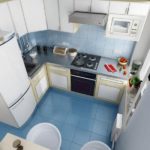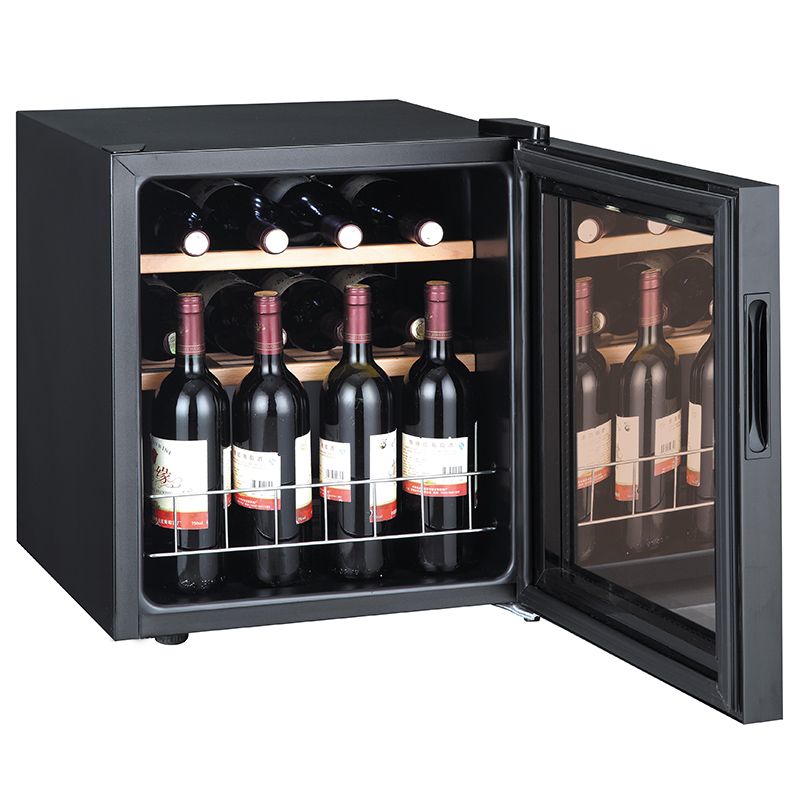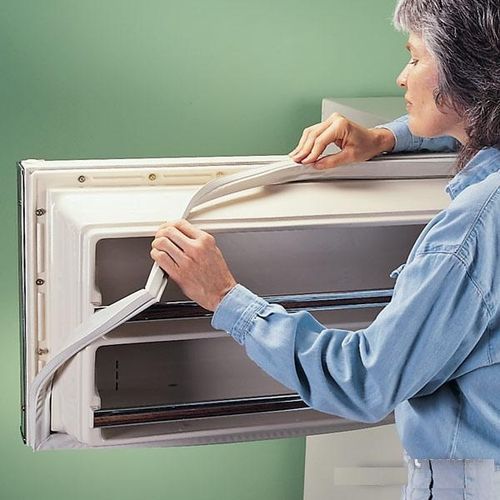How to install a refrigerator correctly
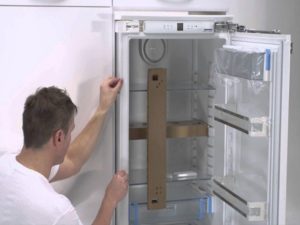 The refrigerator belongs to the categories of “essential” household appliances. It significantly extends the shelf life of food and medicine, freezes and stores semi-finished products and saves the summer with ice and chilled drinks. Its correct installation extends the life of the device, so you need to approach the installation issue responsibly and in advance.
The refrigerator belongs to the categories of “essential” household appliances. It significantly extends the shelf life of food and medicine, freezes and stores semi-finished products and saves the summer with ice and chilled drinks. Its correct installation extends the life of the device, so you need to approach the installation issue responsibly and in advance.
It is advisable to determine the installation location before purchasing in order to immediately look for a model of certain sizes and characteristics.
Important! Usually, the installation location of the refrigerator is determined by the presence of a good outlet, but if you purchase a model with an ice maker, then you need to provide for its connection to the water supply, which means that the installation location should be close to the pipe.
It is also worth noting that not all devices have the ability to move the door to open in the other direction, so you need to think in advance about which side will be more convenient to approach it from.
The content of the article
Recommended supporting surface
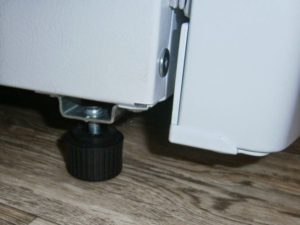 Such a large and heavy unit must be installed on a strong, level, non-slip surface. If the floor is concrete and the finishing is done with tiles, then there should be no problems. If the floor surface is wooden, then you need to make sure that the boards are screwed very tightly and do not bend under the weight of the refrigerator. During operation, the compressor creates vibrations, which will be amplified due to the softness of the floor - this will quickly disable the device, and will also irritate others, because the vibrations will be transmitted over the entire surface.
Such a large and heavy unit must be installed on a strong, level, non-slip surface. If the floor is concrete and the finishing is done with tiles, then there should be no problems. If the floor surface is wooden, then you need to make sure that the boards are screwed very tightly and do not bend under the weight of the refrigerator. During operation, the compressor creates vibrations, which will be amplified due to the softness of the floor - this will quickly disable the device, and will also irritate others, because the vibrations will be transmitted over the entire surface.
What tools will you need?
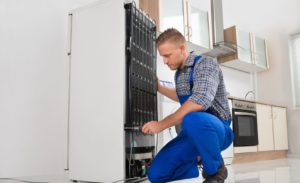 Installing a refrigerator does not require a wide range of tools; below are all the items that may be required when installing different types of apparatus:
Installing a refrigerator does not require a wide range of tools; below are all the items that may be required when installing different types of apparatus:
- wrench - needed to adjust the legs, often included in the kit;
- liquid or laser level - it is needed to adjust the unit in the horizontal and vertical plane, to set it “level”;
- water wrench (“alligator” or pliers) – if the refrigerator has an ice maker, it will need to be connected to a cold water pipe;
- fum tape (tow) - to seal the connection between the pipe and the hose (only if there is an ice generator);
- a screwdriver or a screwdriver - they will be useful for installing decorative panels on the device door if you purchased built-in appliances.
Important! After unpacking the box, the refrigerator needs to adapt to the temperature conditions of the room; to do this, wait 6 to 12 hours before connecting it to the network.If it has been standing outside for a long time at sub-zero temperatures, then it is better to increase the time before connecting to 24 hours.
How to properly level a refrigerator
To correctly level the refrigerator, you need to use a special liquid level. It must be applied to the walls of the device and the legs must be twisted so that each side is perfectly vertical. Additionally, you can check the horizontal plane by placing a level on the cover of the device.
Reference! You can twist the two front legs a little more than the back ones, tilting the angle a little back towards the wall. This installation will ensure the door closes more tightly. Adjust the angle by 1 - 2 degrees.
Built-in refrigerator: how to install it correctly without a professional technician
Important Installation Guidelines
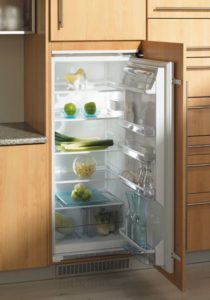 Compliance with certain rules for installing refrigeration equipment will help increase its service life and ensure maximum operating efficiency. It is not recommended to place the refrigerator next to:
Compliance with certain rules for installing refrigeration equipment will help increase its service life and ensure maximum operating efficiency. It is not recommended to place the refrigerator next to:
- Sink – a refrigerator is an electrical appliance, so high humidity is a significant threat to it; it is better to reduce all risks to a minimum.
- Stove, oven – it will be easier for freezing and refrigeration equipment to work if the air next to it does not heat up, which means increasing the temperature inside the chambers. They need to be located at least 60 cm from each other.
- Window – in the summer, the sun's rays will fall on the walls of the refrigerator and heat it up, you should avoid this.
During operation of the compressor and intensive cooling of the chambers, the refrigerator intensively converts energy and releases heat into the surrounding air.For it to work correctly, it needs a space from the back wall to the wall - at least 10 cm, from the side walls - at least 3 cm. Such an installation will allow air to circulate around, taking away the heat given off.
Make sure that the outlet into which the refrigerator plug is connected is grounded. It is also advisable to connect the device without using extension cords and adapters. If possible, it is better to connect it to the network through a voltage stabilizer to avoid surges and extend the life of the compressor.
Detailed instructions on how to install a built-in refrigerator
Installing an embedded instance that does not meet the location requirements is no different from regular samples. The only difference is the pre-limited size of the installation space. It is worth considering the dimensions of the refrigerator in order to leave the recommended air gaps around the walls. Built-in units are sold without beautiful front door trims. The facade will be decorated with special panels made in the overall design of the kitchen. They can be installed on the slides or brackets that come with the kit.
The best video recommendations on the topic of installing built-in models
If the recommendations described above are not enough or it is better to “see once than hear a hundred times,” then we suggest that you familiarize yourself with the video recommendation from professional installers:
Secrets to successfully installing cooling appliances in the kitchen
The most practical options for arranging kitchen appliances in the room
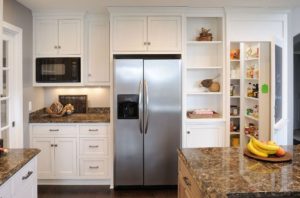 The size of the kitchen does not always allow you to install household appliances according to the attached instructions.Before installing the electronics, you need to take into account that the place for the stove is determined in advance - the place of connection to the gas pipe. If the stove is electric, then use the advice above and install the stove and refrigerator at a distance of at least 60 cm.
The size of the kitchen does not always allow you to install household appliances according to the attached instructions.Before installing the electronics, you need to take into account that the place for the stove is determined in advance - the place of connection to the gas pipe. If the stove is electric, then use the advice above and install the stove and refrigerator at a distance of at least 60 cm.
The sink is placed next to the water pipes, so its location is also known in advance. The refrigerator would best be placed in a corner - this arrangement is good because at least two sides (side and back walls) will be insulated from additional heat from the stove or water from the sink, in case it is impossible to arrange the equipment as recommended.
Embedded samples already have their place. It is determined by the designer at the stage of designing the kitchen layout, so such equipment will simply need to be put in “its place.” Unlike a hob, an oven produces much more heat during operation, so the refrigerator and oven should be located as far away as possible.
Where to put the refrigerator so that it does not interfere
As mentioned above, it is best to determine the place of the refrigerator in the corner, where it will not interfere with its massiveness. However, if there is not enough space in the kitchen, then it can be taken outside, for example, into the corridor or utility room. In this way, you can find the most insulated place from moisture and heat, ensure sufficient air circulation and save space in the kitchen. With this installation, you need to remember that you will have to walk to the refrigerator, so do not hide it too far.


